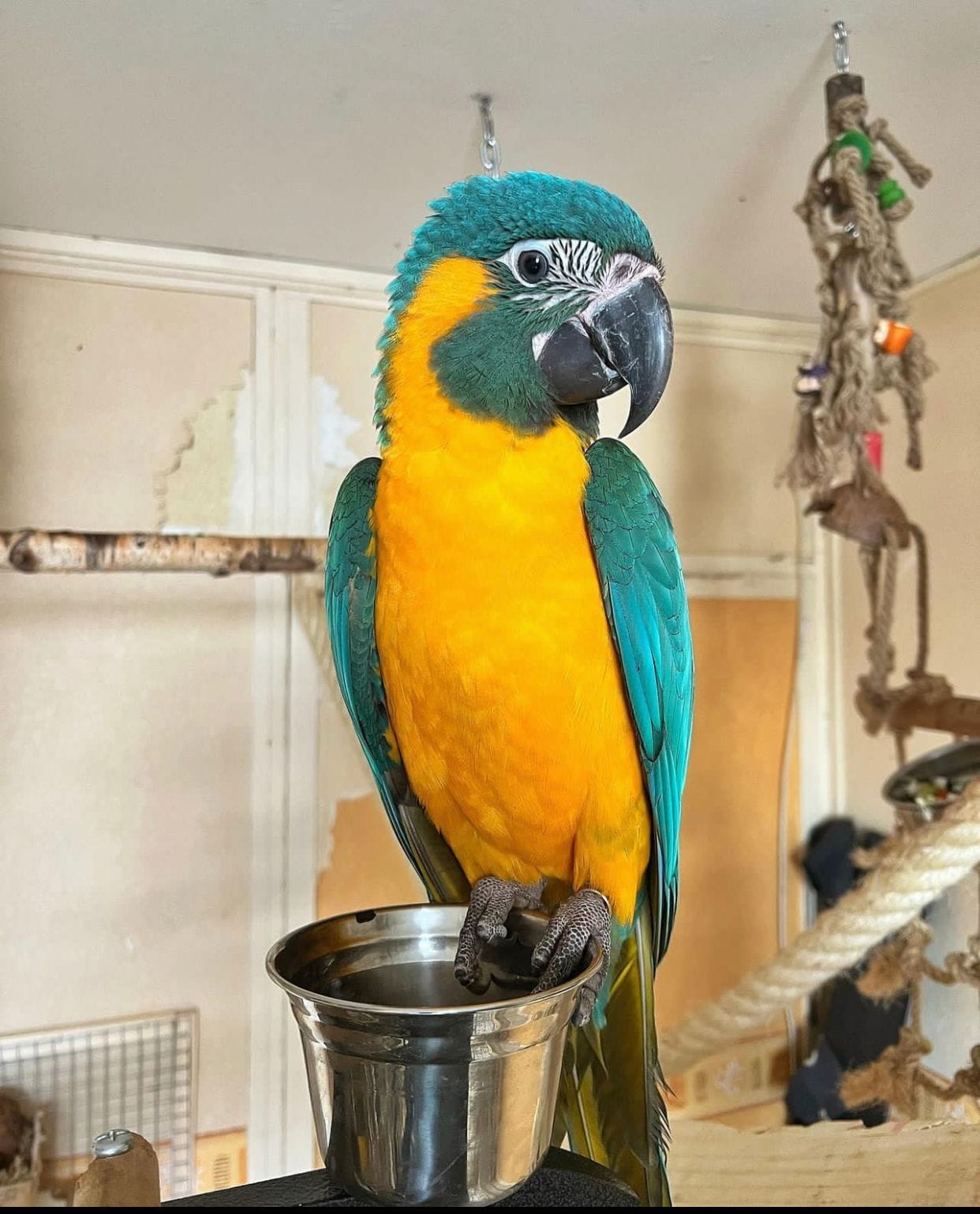10 Tips For Getting The Most Value From Why Are The Glaceous Macaw And…
페이지 정보
작성자 Collin Bedard 작성일25-02-24 09:46 조회3회 댓글0건관련링크
본문
 Why Are the Hyacinth Macaw and Glaucous Macaw So Similar?
Why Are the Hyacinth Macaw and Glaucous Macaw So Similar?The two bird species despite their differences have a similar evolutionary history. Their dependence on palm swamps for nesting and roosting demonstrates the interconnectedness of nature and the need to conserve endangered habitats.
With its vibrant blue plumage and distinctive yellow accents, the hyacinth macaw is unmistakable. Its apparent smiley beak packs an incredibly powerful bite that can crack coconuts and large brazil nut pods.
 The Hyacinth Macaw
The Hyacinth MacawThe Hyacinth Macaw is the biggest parrot, and a magnificent bird. It is striking blue in color with yellow highlights around the eyes and the lower beak, which can make them look like they are smiling. It has short sturdy legs that permit it to hang upside down or sideways and a massive hook beak, which is specifically designed to break open coconuts. They are extremely intelligent and social, with a tendency to be with a single partner throughout their lives.
Hyacinth macaws are not migratory and their distribution is linked to the availability price of blue macaw a specific palm species, which are their primary food source. This is the primary distinction between macaws and other parrots that are usually migraters.
A large portion of the diet of the hyacinth macaw is comprised of the nuts of native palm trees, notably the acuri and Bocaiuva. They are able to crack the seeds into pieces due to their strong beaks, and they also consume fruits and other plant material.
They are not migratory, and their population is linked to the availability and quality of acuri and Bocaiuva Palms that provide their primary food source. This is a major difference between macaws, and spix Macaw for sale other parakeets that are generally migrants.
Unlike most parrots, which prefer dense tropical rainforest habitats, the hyacinth macaw can be found in less forested areas like palm swamps and flooded grasslands. The majority of population of the hyacinth macaw is located in the Pantanal, the world's largest tropical wetland in Brazil.
Hyacinth Macaws, like other birds are monogamous. They select their partner at approximately 3-4 years old and stay with them throughout their entire life. They are very sociable animals and will often interact with humans, however it is important to remember that they are wild animals and should not be taken out of their natural environment.
If you want to spend time with a beautiful, intelligent, spirited creature who can mimic your words, think about adopting your pet parrot from an aviculturist who breeds these amazing animals. Selecting an aviculturist responsible and who is well-established is the best method to ensure that these amazing creatures will be cared for in the wild.
The Glaucous Macaw
The Glaucous Macaw, or Ara Glaucus, is among the most colorful birds found in the Amazon basin. The large parrot has blue top parts and yellow underparts. It can be found in the forests of tropical South America. It is a very rare bird and is classified as Critically Endangered. The reason for the decline of this bird is most likely the capture of live adults for the trade in wild birds and the massive thinning of palms yatay (Butia yatay) that appear to have been its main food source.
The name of this bird comes from its striking blueish color. It is described in terms of light turquoise to the color of azure. The underparts are yellowish, and it has a grey head. It is smaller than the Lear's Macaw and more slender than hyacinth Macaw.
The glaucous Macaw isn't just a beautiful bird, but also a symbol of hope to the people living in the Amazon Basin. It is hoped that the glaucous macaw will soon be found in the wild and populations can be restored to ensure the survival of this magnificent species.
Although the glaucous macaw has been believed to be extinct in the wild, there have been a number of reputed reappearances over the years. In February 1992, a female specimen was discovered at Customs in Britain. It was an animal that was kept in a few of the world's most famous Zoos. At the time it seemed to be a genuine Glaucous Macaw.
The glaucous Macaw, which was believed to be authentic, was found to be a hybrid between the Lear's hyacinth and macaws. Its azure color was more reminiscent of the hyacinth's and was bred to breed hybrids.
Even even if a glaucous macaw were to reappear in the wild, it is unlikely that the bird would breed and produce healthy offspring. This bird has been severely threatened for too long, and it would be extremely unfortunate if this gorgeous tropical giant were to become permanently gone forever.
The Macaw's ancestors
Macaws often develop a strong bond with their human companions and are often very affectionate. They are very vocal birds, and can be heard with an array of sounds and songs. They also enjoy mimicking sounds, especially the voice of their human counterparts. Macaws who reside with humans are able to mimic the sounds of words. Macaws use loud, shrieking sounds to communicate with one another or to warn of danger. They can be heard calling for 5-10 minutes frequently throughout the week.
When a pair of macaws choose to create a bond they will remain in a bond until one dies. They will preen feathers of each other and roost together in the evening. They also mate at least each year, and lay eggs in a nest constructed inside a hollow tree or a hole in the dirt on the cliff face. The female incubates the egg for 12 weeks, while the male gathers food and protects chicks against predators.
Macaws were regarded as companion birds by humans once they began to interact with them. They were regarded as symbols of love and power, with their powerful beaks and bright blue feathers. Some people believed that a macaw could reveal to them secrets about the future or answer their prayers. By making their shrieking sound they were believed to scare away crocodiles or snakes.
There was no way to know how many wild glaucous Macaws existed for many years. There were records of a few specimens in captivity, but no one knew where they originated from or what age they were. One famous bird lived at Paris' Jardin d'Acclimatation from 1886 until 1905 while another inhabited the zoo of Buenos Aires from the 1920s until 1936. Despite these early records, it was widely believed that the glaucous Macaw had gone extinct.
In 2010, an analysis of isotopes revealed that the glaucous macaw for sale near me remains in the wild. The results of this study were published in Science. The authors suggest that glaucous macaws in the wild likely originated from a population located in the Paquime region in northern Chihuahua. The apparent longevity of the birds is a result of the fact that they are extremely adaptable to their environment and can endure in a variety of environments, including arid desert conditions.
The Macaw's Future
As the story of the hyacinth Macaw and the Glaucous macaw show, parrots have an amazing ability to adapt to their environments. In the wild, parrots are able to travel miles to find mates or nesting spots. They can also mimic human speech. Their feet are shaped so that they can sit in trees and climb them. They can carry food in their beaks.
Parrots aren't as domesticated as cats and dogs, despite their natural abilities. They are still wild animals and they have to live in the ways that their ancestors lived. If you want to bring one of these birds into your home, do so with great care and sensitivity. Parrots can be noisy and large, and they can cause damage to furniture and your home. They are also listed on CITES because of the excessive collection for the pet trade and habitat loss.
One of the best examples of a successful reintroduction effort is the storied story of the Spix's Macaw that was thought to be extinct until Helmut Sick and his field assistant, Dante Teixera, spotted three birds near Formosa do Rio Preto in 1974. At the time of the discovery, the only pair of birds in captivity was in Al Wabra, Qatar.
At buy a macaw parrot meeting held in Sao Paulo city, Purchase and other conservationists decided the only solution to the issue was to release macaws from captivity into the wild. The number of breeding pairs is extremely small, and they needed to act swiftly. In addition, they had to create separate lines at the different breeding centres so that a single pair of parents did not overwhelm the entire population with its genes.
The conservationists began to search Brazil for any spix macaw for sale (buy-macaw18051.bmswiki.com)'s macaws in private hands that could be released for reintroduction. Owners were initially reluctant due to fear of prosecution for breaking a law that banned the export of animals. Kiessling claims that "one by one" people began to come forward.
댓글목록
등록된 댓글이 없습니다.
